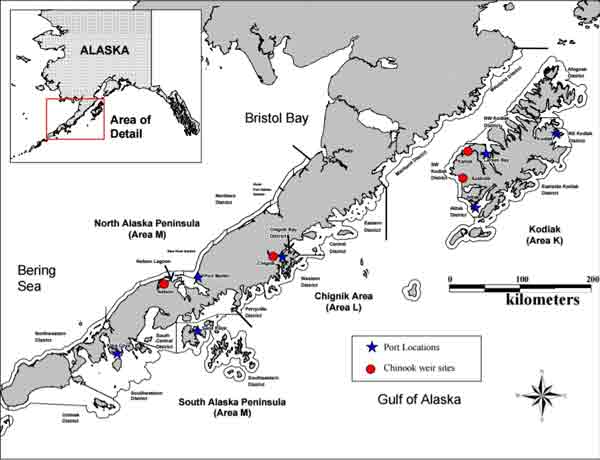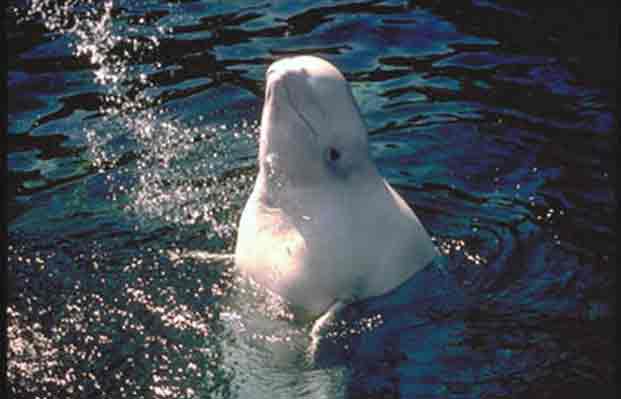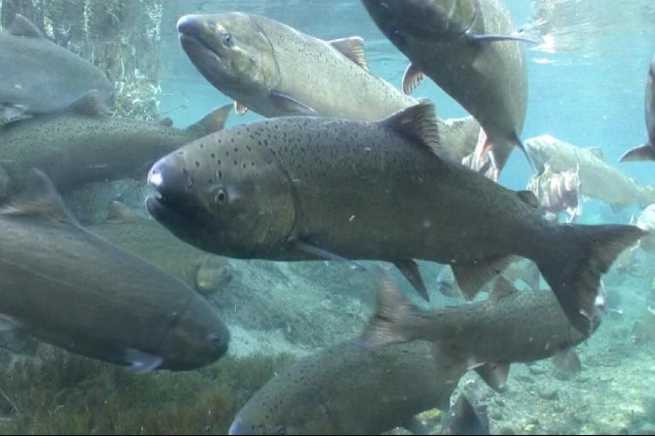
A new study shows that the king salmon harvest in Western Region of Alaska commercial fisheries and Kodiak area sport fisheries from 2014 through 2016 was comprised mainly of British Columbia and West Coast U.S. stocks.
Those harvests of Chinooks were followed by smaller contributions from Southeast Alaska/Northeast Gulf of Alaska, Cook Inlet and Kodiak, fisheries scientists said in their report released in late December.
The primary goal of the “Genetic Stock Composition of the Commercial and Sport Harvest of Chinook Salmon in Westward Region, 2014-2016” was to estimate the stock of origin, age, size and sex composition of Chinook salmon harvested in Western Region commercial and Kodiak area sport fisheries from 2014 through 2016 as part of the larger statewide Chinook Salmon Research initiative.
The study involved sampling of Chinook salmon commercial and sport harvests in the Kodiak area from 2014 to 2016. Budgetary constraints limited the sampling of commercial harvests in 2014 for the North Peninsula, South Peninsula and Chignik commercial fisheries.
A total of 10,154 Chinook salmon tissue samples were collected from four commercial fishery areas and sport fisheries in the Kodiak area. Some 8,829 of those samples were genotyped to represent 25 spatiotemporal strata. Stock compositions were estimated with genetic mixed stock analysis for all strata using a comprehensive coast-wide Chinook salmon baseline with important local stocks defined as separate reporting groups, to the extent possible, the report said.[xyz-ihs snippet=”Adsense-responsive”]Stock composition estimates were consistent among strata within commercial and marine sport harvest, although there were differences between these fisheries, the report said.
In the annual commercial harvest, over 50 percent of the fish were from British Columbia and over 30 percent of the fish were from the West Coast of the United States.
In the marine sport fishery, the relative abundance of British Columbia and West Coast U.S. fish varied, but jointly represented over 80 percent of annual harvest.
In both the commercial and sport fisheries, the annual harvest of Kodiak-origin Chinook salmon was below 5 percent of the total harvest.
These results provide the most comprehensive estimates of stock composition and stock specific harvests of Chinook salmon in the Kodiak area the report said.
Decreased returns of Chinook salmon in the region and throughout the state have prompted statewide concern about the health of these Chinook salmon stocks. To address those concerns, the Chinook Salmon Research Initiative implemented stock assessment programs targeting 12 indicator stocks from around the state.
The Western Alaska Salmon Stock Identification Program, from 2006 to 2009, utilized genetic mixed stock analysis to determine the stock of origin of chum and sockeyes caught in the inshore commercial salmon fisheries of western Alaska.
The complete report is online at https://www.adfg.alaska.gov/static-f/regulations/regprocess/fisheriesboard/pdfs/2016-2017/kodiak/FMS16-11.pdf
Fishermen’s News Online grants permission to the Alaska Native News to post selected articles. Read More at: Fishermen’s News Online.
[xyz-ihs snippet=”Adsense-responsive”]








